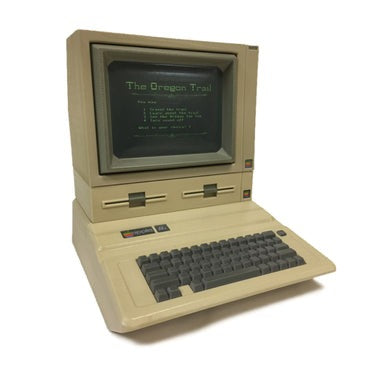Not too long ago, I received an email from Wired magazine’s UK branch, asking if I’d be willing to participate in an article about technology in the funeral service or death care space. I responded with an enthusiastic “yes” since I feel I have a lot to share about bringing new technology to an industry that lags far behind the rest of the commercialized world concerning innovation and new ideas for urns.
I was eager to let the writer know that our idea of using 3D printing technology to make one-of-a-kind custom cremation urns has opened up an exciting new realm of personalization within a product category about 10,000 years overdue for a make-over. What do they find when archaeologists dig up civilizations of yore? Urns that look very much like the ones people settle for today, except dustier.
It’s more than time for a shake-up, and we’ve been able to do that with modern technology that has opened up a world of ideas for urns. The choice is no longer, “Do we want the blue vase or the green vase for our beloved?” but rather what is the most personal and meaningful way we can remember this person? It’s time for customized urns that tell a story about loved ones gone but not forgotten.

The Wired Interview
The Wired writer and I spoke a bit about our company and how our custom urns of various things help people remember their loved ones. Next, she began to inquire about the “quirky” and “weird” personalities of the people who purchase these types of products based on their ideas for urns. However, I thought to myself: What is so weird and quirky about trying to remember someone through something they loved the most? Something that represents their passion, their personality, their essence.
I responded that I didn’t see it as weird—rather meaningful and appropriate. She was cordial (she’s British so…you know) as she pressed a couple more times on what’s the strangest thing we’ve made. Are they ever inappropriate? Are some ideas for urns just too out there? Questions like that.
I didn’t bite beyond letting her know that of the thousands of custom urn pieces we’ve made, I’ve only felt compelled to politely walk away from two projects. I don’t like being in the judgment business, but I do have a brand to protect.
So, it was not a complete surprise that when the new article ran, it took what I believed to be an unfortunate turn. Not so much unfortunate because of the content since it was certainly not bad press. However, I felt this way because it was a missed opportunity to celebrate individuals who want to step outside the ordinary with their unique ideas for urns. Individuals who don’t like the answer “because we’ve always done it that way” to any question, but those who are ready to embrace something new and bold – new things and new kinds of urns to help people remember their loved ones.
When confronted with how to best honor their loved ones, the type of individuals who aren’t satisfied with the templated, transactional choices so often presented by funeral professionals. While these folks are well-meaning, let’s face it, they are not exactly playing on the cutting edge of inspired innovation. Our customers want something different. Something unique. Something personal. Something AMAZING! So, that’s what we offer when we take your ideas for urns and create something special.
How Will You Celebrate a Life Well Lived?
As hard as it can be to admit, I can understand why the funeral service industry may not embrace these pioneers with personalized ideas for urns. For a very long time, death care professionals have set themselves up to be the arbiters of what is and what is not dignified. What I don’t understand is how Wired magazine, a publication that prides itself on being on the leading edge of new ideas and the latest technologies, would label these individuals as “weird.”
Weird how? Weird like using an iPod when no one had any idea what the heck an MP3 was? Or weird like hiring an Uber when there’s a perfectly good taxi parked (wherever taxis park)? All new ideas are weird and misunderstood at first. They all go through three stages:
- They are ridiculed.
- They are fought by the disrupted establishment.
- They are accepted as though they were here all along.
The article talked about people who want to be buried in a biodegradable pod, people who want their remains shot into space, people who want to be turned into diamonds or planted with a tree—you name it. To all these people, I say enthusiastically, “Go nuts!” Why not? Pursue whatever new ideas for urns and other burials that bring you the most meaning.
If you take a step back, how is becoming a tree or taking a posthumous space travel any weirder than burning up remains or stuffing a body into a pine box? Go nuts! You deserve to be remembered in a way that brings comfort, peace, and relief from grief for your loved ones. That’s why we welcome all ideas for urns. Everybody deserves to be memorialized in a genuine way true to their personality and spirit.
Rest How You Will be Remembered Best
You should be able to rest how you will be remembered best. What does this mean? The way you lived is how you should be remembered. Animal lovers should have an urn related to their passion. An avid hiker should have something representative of the outdoors. You should never have to deal with a personality-less, factory-created urn that doesn’t show the person you were and why you were so beloved.
Whether you are planning for your final resting place or want to celebrate a lost loved one, you can bring your ideas for urns directly to us. At Foreverance, we are experienced in turning your ideas into a reality. We’ll take your story and turn it into a specially curated urn that’s reflective of a true individual. Simply contact us, and we can get started on a unique journey to provide peace of mind.










